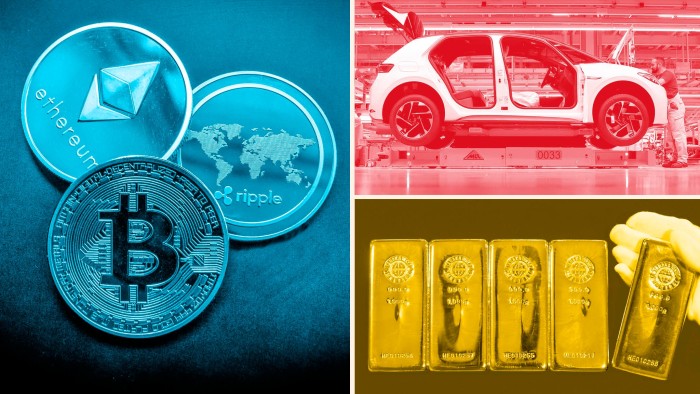Where will bitcoin prices head next?

Roula Khalaf, Editor of the FT, selects her favourite stories in this weekly newsletter.
Where will cryptocurrency prices head next?
Last week was a testing time for cryptocurrencies such as bitcoin.
Prices were already wobbling as the week began, after Tesla chief executive Elon Musk, a substantial advocate of the tokens and champion for the market’s online fans, reversed plans to accept bitcoin as payment for his electric vehicles.
But prices dropped by as much as 30 per cent in the middle of the week after the People’s Bank of China issued a warning to the country’s financial institutions against using the digital currencies for payments — a message it reiterated just a few days later. Chinese authorities have also launched a crackdown on bitcoin “mining” — the process whereby computers unlock the coins.
Adding to the sense that global regulators are tightening their grip on this lightly supervised industry, US tax and monetary authorities, including Federal Reserve chair Jay Powell, also hinted at crackdowns.
Broader stock and bond markets have shown some sensitivity to bitcoin’s movements in recent days, suggesting that, on the margins, bitcoin’s path from here could move wider markets.
Where that path is heading is less clear. Last week’s rout in the price of bitcoin and other cryptocurrencies reversed only when Musk tweeted his support for the asset class and indicated that Tesla did not intend to sell its holdings.
Musk’s famously unpredictable online messaging means it is tough to predict what happens next in this increasingly tense market. “It may seem in some quarters that Jay Powell and his colleagues may be somewhat subordinate to Elon Musk as the true king of central banking, with markets seemingly happy to move according to his command,” said Mark Dowding, chief investment officer at BlueBay Asset Management. “Hopefully it doesn’t all end in tears” for Musk and his followers, Dowding added. Katie Martin
How quickly is Germany’s economy rebounding?
Two surveys out this week will signal how rapidly Germany is bouncing back after it had the weakest growth of any big economy in the eurozone in the first quarter, shrinking 1.7 per cent from the previous quarter.
The nation’s prospects have brightened considerably since the end of March because of an accelerating vaccination programme, the lifting of some coronavirus containment measures and booming export orders for manufacturers.
Economists are confident that the pair of surveys — one on Germany’s business climate from the Ifo Institute on Tuesday, the other tracking consumer confidence from GfK on Thursday — will bolster expectations of a return to growth in the second quarter.
“From a low base, we should get growth in private consumption, construction is likely to do more than stand still and production expectations are at record highs for manufacturing,” said Carsten Brzeski, head of macro research at ING. “All the ingredients are there to see a sharp rebound in growth in the second quarter.”
The Ifo’s business climate indicator is expected to hit its highest level since May 2019, while the GfK survey is forecast to reach a seven-month high, according to polls of economists by Reuters.
However, German businesses face growing disruptions to supply chains for parts and materials, which Ifo found had reached a 30-year high last month.
By contrast, high-frequency data, such as Google Mobility figures, show that German consumers are visiting entertainment and leisure venues more often and their spending had surged in May to close to pre-pandemic levels. Martin Arnold
How long can the gold recovery last?
Gold prices hit their highest level in four months on May 19 on rising fears over inflation and a softer dollar, as well as a sharp fall in the price of bitcoin.
The metal has been on the ascent since it struck its lowest level in more than eight months at $1,707 a troy ounce in early March when signs of a global economic recovery dented its appeal. On Wednesday, it touched $1,887 a troy ounce, a four-month high, dipping only slightly by Friday to $1,878.
Its path from here hinges, like so many other parts of the financial markets, on the outlook for growth and inflation. Typically, investors treat gold as a hedge against inflation, so a pick-up in consumer prices should be supportive, and US consumer prices rose at their fastest pace since 2008 last month.
Balancing that out, though, is the fact that vibrant global growth tends to dent appeal for the haven metal.
Carsten Menke, an analyst at Julius Baer, said the impact on gold from the latest inflation-stirring wave of US government stimulus is mixed.
“As we project a recovery of global growth, we see downside rather than upside for gold and silver prices, even though inflation may overshoot in the short term,” Menke added.
Capital Economics concurred, saying it expected gold to end the year at $1,600 an ounce. Henry Sanderson
Comments